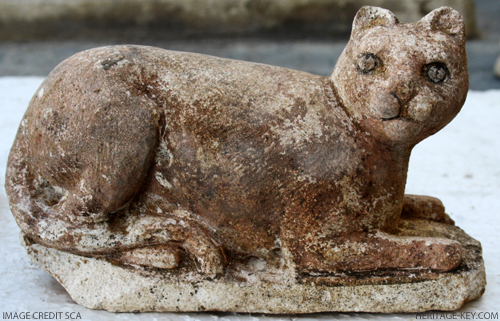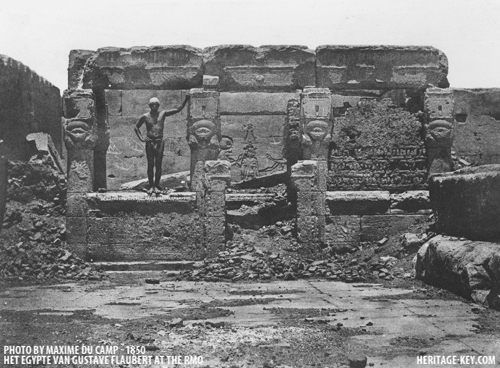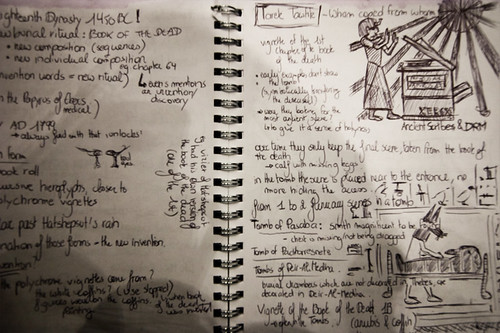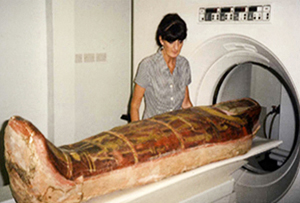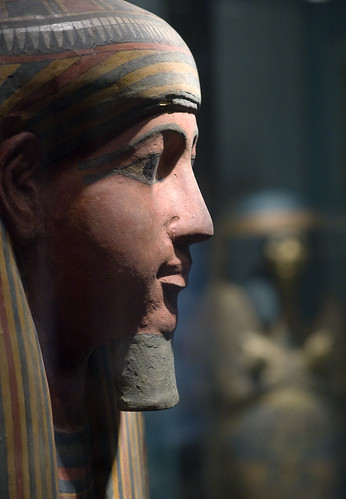Egypts Minister of Culture, Farouk Hosni, and Zahi Hawass, Secretary General of the Supreme Council of Antiquities (SCA), along with the governor of Luxor, Samir Farag, will embark today on an inspection tour along the Avenue of Sphinxes that connects the Luxor and Karnak temples. During this visit, they will install the piece of red granite that was returned to Egypt by the Metropolitan Museum of Art in its original place at the Ptah temple at Karnak. Built by the 30th Dynasty king Nectanebo I (380-362 BC), the avenue is 2,700 meters long and 76 meters wide, and lined with…
-
-
Actor and Director Mel Gibson is working on a Viking-themed film that is going to star Leonardo DiCaprio, who will have to brush up on his Old Norse. The script is in the hands of Oscar-winning screenwriter William Monahan, and will chronicle the Viking raids on England and Scotland in the ninth century. When asked about the Viking project at a recent press event, Mel Gibson told Collider.com: I think its going to be English – the English that would have been spoken back then – and Old Norse. Whatever the 9th century had to offer. Im going to give…
-
Remains of one of the oldest members of the English royal family, Edith of England, have been unearthed at the Magdeburger Dom in Germany. (image slideshow) A lead coffin was discovered, bearing her name ‘Eadgyth’ and accurately recording the transfer of her remains to the German cathedral in 1510. Inside the coffin, a nearly complete female skeleton was found, wrapped in silk. Queen Eadgyth, the sister of King Athelstan and the granddaughter of Alfred the Great, King of Wessex became the wife of Otto I, the Holy Roman Emperor in 929. She lived in Saxony and bore Otto at least…
-
The remains of a temple of Queen Berenike – wife of King Ptolemy III – have been discovered by archaeologists in Alexandria, Egypt. Dr. Zahi Hawass said the remains discovered are 60 meters by 15 meters, and extend under Ismail Fahmy street. About 600 Ptolemaic statues – amongst which are beautiful depictions of the cat goddess Bastet – were also unearthed. Dr. Mohamed Abdel Maqsoud, Head of Antiquities of Lower Egypt, said that the mission excavating at Kom el Dikka on property of the Alexandria Security Forces included 18 skilled excavators and restorers. The large collection of Bastet statues indicates…
-
Gustave Flaubert – the author of ‘Madame Bovary’ – travelled through Egypt from October 1849 to July 1850. Together with his friend and photographer Maxime Du Camp he journeyed from Alexandria in the North to Sudan in the South and back. This journey is the focus of the exhibition ‘Het Egypte van Gustave Flaubert’ (Gustave Flaubert’s Egypt), which runs at the RMO in Holland until April 4th 2010. The expo follows the famous French writer on his journey through Egypt and takes its visitors from the amazing pyramids at Giza and the sanctuaries at Luxor to the gigantic pharaonic statues…
-
A splendid exhibition in New York – ‘The Lost World of Old Europe: The Danube Valley’ – brings to the United States for the first time more than 250 objects recovered by archaeologists from the graves, towns, and villages of Old Europe, a period of related prehistoric cultures that achieved a peak of sophistication and creativity between 5000 and 4000BC in what is now southeastern Europe. The cultures mysteriously collapsed by 3500 BC, possibly brining a shift from female to male power. The exhibition – made possible through loan agreements with over 20 museums in Romania, Bulgaria, and Moldova –…
-
Never before the Book of the Dead has been the focus of such a major exhibition as the one upcoming at the British Museum in November this year. Rumours of the exhibition started to surface (or at least, reach my ears) ever since the Colloquium on the Book of the Death last year, but was only recently confirmed. ‘Journey through the afterlife: the ancient Egyptian Book of the Dead’ will focus on how the ancient Egyptian Book of the Dead was thought to guide the deceased safely through the dangers of the underworld, ultimately (hopefully) ensuring eternal life. The Book…
-
The 21st century has seen incredible advances in our knowledge and use of forensic sciences – to investigate crimes and to find out about people from ancient times. How can we apply this information to the people of ancient Egypt? Find out – and test your own skills in a hands-on practical session – at ‘Forensic Aspects of Ancient Egypt‘ presented by Joyce Filer. The study day – being repeated due to popular demand – will take place on Saturday the 20th of February and will add to your knowledge about the difference between male and female mummies (not as…
-
The results of the ‘What value do replicas hold?’ Heritage Key survey are in!Everybody agrees that a replica – regardless of how real it looks – can only ever be a duplicate. Yet the vast majority (79.28%) of those who took our ‘What value do replicas hold?’ survey see good use for these clones, in educations, research, protection from damage and saving on travel costs. Replica Valley of the Kings and King Tut’s Tomb:Worth a Visit? The ‘Replica Valley of the Kings’ is hot news lately, with the SCAand the Getty Institute embarking on a joint effort to protect the…
-
After having been held in the UK for the past 10 years, the Current Reseach in Egyptology conference moves to the continent for the first time in 2010. CREXIwill take place January 5th to 8th at the Leiden University in The Netherlands. Originally set up by students at the University of Oxford in 2000, the main aim of the conference is still to provide graduate and post-graduate students the opportunity to present their research. The conference covers the entire span of the Palaeolithic to the Graeco-Roman and Coptic Periods in Egypt and the Sudan, which leads to a broad range…


